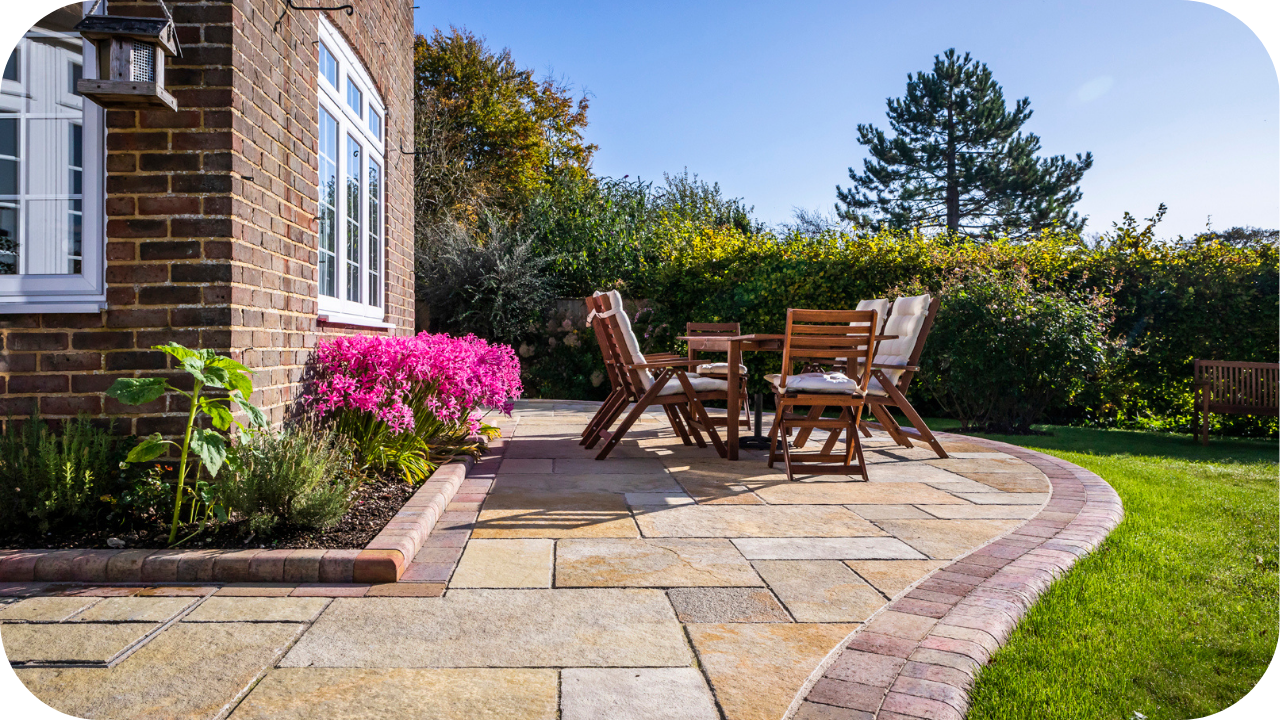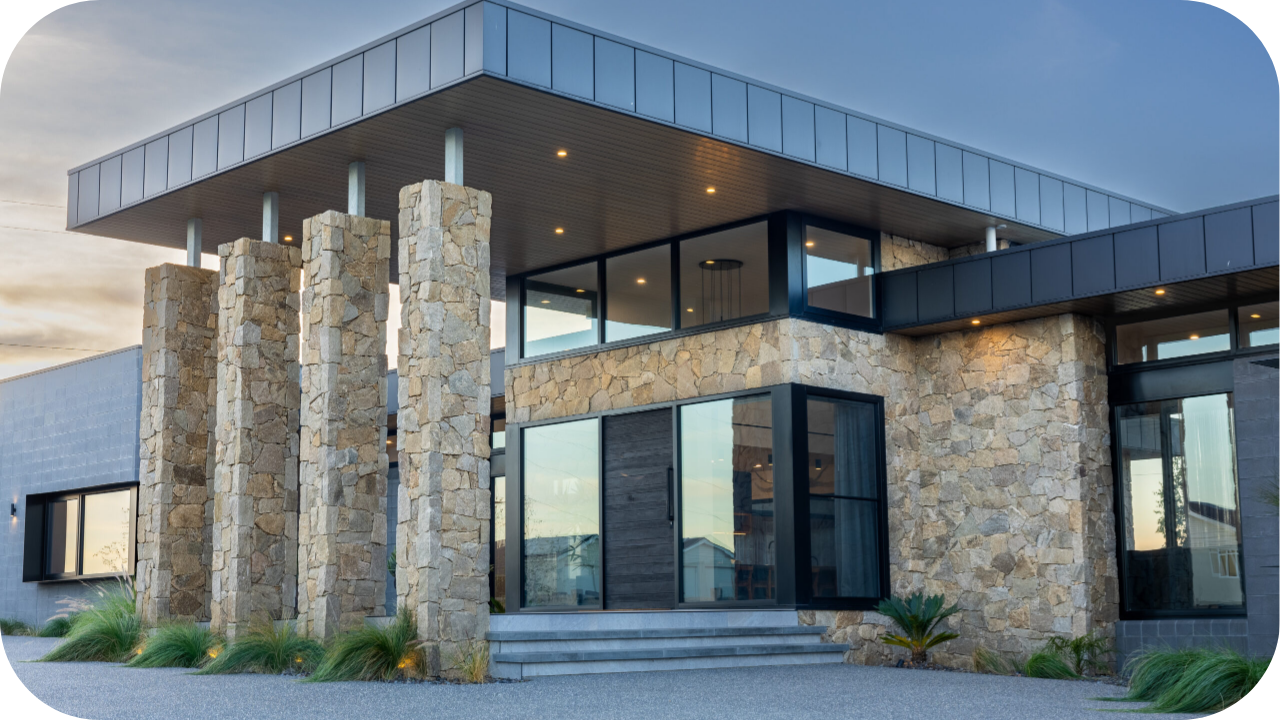
The Mediterranean aesthetic is celebrated for its warm, rustic, and elegant appeal. It evokes images of sun-drenched coastal villages and timeless architectural charm. This style embraces earthy tones, natural textures, and a harmonious blend of indoor and outdoor living, creating inviting and enduring spaces.
Natural stone is pivotal in achieving this look, not only because of its durability and resilience but also because of its inherent beauty and unique character.
This guide focuses on the best natural stones available at Splendour in Stone and offers insights into how these materials can help you create an authentically Mediterranean space.
What Defines a Mediterranean Look?
A Mediterranean aesthetic draws inspiration from the coastal regions of Southern Europe, particularly Italy, Spain, and Greece. This style is characterised by a harmonious blend of warmth, texture, and timeless elegance, creating inviting and enduring spaces. Key elements that define a Mediterranean look include:
- Earthy Tones and Sun-Kissed Hues: The colour palette comprises warm, natural shades such as beige, cream, terracotta, and soft greys. These tones reflect the sunlit landscapes and coastal influences of the Mediterranean region.
- Rustic and Textured Finishes: A mix of smooth and rough textures adds depth to the design. Exposed stone walls, weathered wood, and decorative plaster finishes create an old-world charm that feels rich in history.
- Natural Materials with a Timeless Appeal: Stone, terracotta, and timber are integral to the Mediterranean design. Natural stone, in particular, plays a crucial role, forming everything from grand entranceways to charming courtyards.
- Open, Airy Spaces with Indoor-Outdoor Flow: Mediterranean homes often incorporate arched doorways, large windows, and courtyards to maximise natural light and ventilation. Outdoor living spaces like patios and verandas are a home extension.
- Architectural Elegance with Ornate Details: Traditional Mediterranean design includes intricate wrought ironwork, decorative tiles, and sculpted columns. These details add sophistication while preserving a sense of craftsmanship and artistry.
Best Natural Stones for a Mediterranean Aesthetic

Nothing defines Mediterranean charm quite like the timeless beauty of natural stone. From sun-kissed courtyards to grand interiors, the right stone creates warmth, elegance, and an enduring connection to nature. Let’s take a look below:
1. Tuscano Limestone
Tuscano Limestone is a standout choice for Mediterranean-style homes due to its warm, earthy tones and natural veining. This stone exudes a rustic charm that pairs beautifully with traditional and contemporary designs.
Its durability makes it an excellent option for exterior walls, feature facades, and patios, while its textured surface provides a natural, weathered look that enhances its authenticity.
Tuscano Limestone is particularly effective in creating grand entranceways or adding depth to fireplaces. It blends with terracotta tiles, timber beams, and wrought iron elements. The stone’s ability to reflect natural light helps maintain the sun-kissed feel characteristic of Mediterranean aesthetics.
2. Marble
Marble has long been associated with Mediterranean grandeur. Its timeless appeal graces ancient villas, palaces, and contemporary homes. Its smooth surface and striking veining make it a luxurious choice for feature walls and elegant flooring.
White and beige marble varieties, often found in Mediterranean interiors, enhance this style’s light-filled, airy aesthetic. Despite its opulence, marble is remarkably versatile and can be paired with rustic elements such as exposed timber beams and terracotta floors to create a balanced, lived-in elegance.
When polished, marble exudes sophistication, while honed or tumbled finishes provide a softer, more natural appeal, perfect for a relaxed Mediterranean ambience.
3. Travertine

Travertine is a signature stone in Mediterranean design. It is known for its distinct porous texture and neutral colour palette. Its soft beige and cream tones create a warm, sunlit effect, ideal for courtyards, pool surrounds, and patios.
Travertine’s naturally non-slip surface makes it a practical choice for outdoor areas, while its ability to withstand varying weather conditions ensures lasting beauty.
Indoors, travertine flooring complements arched doorways, plastered walls, and exposed timber ceilings, reinforcing the rustic elegance of Mediterranean interiors.
Whether used in tumbled, honed, or brushed finishes, travertine brings depth and character to any space, seamlessly blending the old-world charm with modern practicality.
4. Sandstone
Sandstone embodies the warmth and natural beauty of the Mediterranean landscape. Its soft, textured surface is golden, beige, and light brown.
This stone is a popular choice for outdoor applications such as garden walls, pool surrounds, and courtyards due to its natural resistance to weathering and slip-resistant properties. Its organic look works beautifully alongside terracotta tiles and lush greenery, evoking the charm of coastal villas.
Sandstone can be used indoors for feature walls, flooring, and fireplaces, adding a touch of rustic elegance. Its ability to age gracefully enhances Mediterranean homes’ lived-in, timeless feel.
5. Limestone
Limestone is a cornerstone of Mediterranean architecture, valued for its subtle tones and versatility. It effortlessly complements traditional and contemporary Mediterranean settings and is available in soft creams, greys, and warm beiges.
Limestone is widely used for cladding, fireplaces, and flooring, creating a seamless transition between indoor and outdoor spaces. Its naturally cool surface makes it particularly suitable for hot climates, helping to maintain a comfortable environment.
Whether polished for a refined look or left in its natural state for a rustic effect, limestone provides an understated elegance that enhances the Mediterranean aesthetic. Combined with terracotta, wood, and wrought iron, it completes the quintessential sun-drenched ambience of a Mediterranean home.
How to Use Natural Stone in Mediterranean Design

Natural stone is the foundation of Mediterranean aesthetics, bringing warmth, texture, and timeless appeal to any space. It enhances this style’s rustic elegance and enduring charm, whether indoors or outdoors.
1. Outdoor Applications
Courtyards, patios, and garden pathways are signature elements of Mediterranean homes, and natural stone is the perfect material to define these spaces.
Travertine and limestone pavers create sun-drenched terraces, while sandstone or Tuscano limestone cladding adds depth to exterior walls and fireplaces.
Around pools, it provides a functional yet sophisticated surface, evoking the ambience of a Mediterranean retreat.
2. Indoor Spaces
Natural stone works beautifully inside the home in kitchens, bathrooms, and living areas (check out some natural stone trends in 2025). Marble benchtops add a luxurious touch, while limestone flooring brings a sense of warmth and authenticity.
Feature walls with textured sandstone or travertine provide a striking focal point, complementing exposed wooden beams and plastered walls to complete the Mediterranean aesthetic.
3. Pairing Stone with Other Natural Materials
Natural stone pairs effortlessly with terracotta tiles, timber furniture, and wrought iron details for a truly authentic Mediterranean feel.
Combining different textures—such as smooth marble with rough-cut sandstone—creates a balanced and inviting environment. Soft lighting and earthy-toned fabrics further enhance Mediterranean interiors’ warm, lived-in appeal.
Maintenance Tips for Natural Stone

Proper maintenance ensures the longevity and beauty of natural stone in Mediterranean-style spaces. Here are essential care tips:
- Seal for Protection: Apply a high-quality penetrating sealer to prevent stains and moisture absorption. Reseal periodically, especially for outdoor stone surfaces.
- Use pH-Neutral Cleaners: Avoid acidic solutions like vinegar or harsh chemicals that can erode the stone’s surface. Stick to mild soap and water.
- Sweep and Dust Regularly: Prevent dirt buildup by sweeping or dusting frequently, particularly in high-traffic areas.
- Rinse Outdoor Stone: Occasional rinsing with water removes dust and grime, maintaining the stone’s natural appeal.
- Avoid De-Icing Salts: Do not use salt on stone surfaces during colder months, as it can cause erosion and long-term damage.
- Use Mats or Rugs: Placing rugs in high-traffic areas reduces wear and protects stone flooring.
- Handle Spills Immediately: Wipe up spills quickly to prevent staining, especially on porous stones like limestone and travertine.
Conclusion
Transform your home with the timeless elegance of natural stone. Whether creating a sunlit Mediterranean courtyard, a rustic feature wall, or a luxurious stone-clad interior, the right choice makes all the difference.
More To Explore

How to Use Border Paving Stones in Your Landscaping
Well-designed landscapes rely on clean, defined edges to create structure and flow. Border paving stones provide a simple yet impactful way to frame outdoor elements

Can Buffalo Granite Withstand Extreme Weather Conditions?
Australia’s climate demands more from building materials. From scorching summers to coastal salt exposure and frost-prone winters, walls need strength that lasts. Buffalo Granite is


